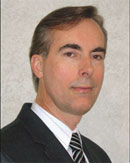From the Editor
Gerard Kugel
Dear Readers,
For all the many accomplishments of the Baby Boom generation, we have not discovered a way to dodge the scythe of Father Time. In this issue, Inside Dentistry features a thought-provoking look at what the graying of the population means to dentistry.
Growing Opportunity...
The retiring Baby Boomer population will approach their sunset years as a largely health-conscious and financially secure generation. They will have experienced better and broader dental care than any previous generation—hallmarked by a markedly lower rate of edentulism—and so will likely continue to demand dental services ranging from implants to esthetics. This trend could produce sizeable profits for the dental industry and the dental practitioners who provide care to this gray brigade.
...or Boomer Burden?
But there is another face to this coin: the more tarnished face of increased risk of caries and periodontal disease that will accompany a population retaining more of their teeth for longer periods of time. Age-associated illnesses, such as Alzheimer’s disease and Parkinson’s disease, as well as heart disease, cancer, and other chronic conditions—not to mention the potential adverse effects of medications used to treat these conditions—can turn routine dental care into a minefield of complications. Access to care itself will prove challenging for a population that may lack mobility, and for many, paying for care on limited incomes will be the largest hurdle.
The Casting of the Gray Gauntlet
Whether you view the impending surge of Boomer retirees as a golden opportunity or a septuagenarian scourge, one thing is certain: the tide is coming in. As a profession, dentistry bears an obligation to arm itself as best it can in the present to face this challenge of the future. Industry, academia, government, and the private sector must all join to provide a continued standard of excellence in our care of these patients. If we fail at this, it will be to our own loss—for one day, “they” will be “us.”
With warm regards,

Associate Dean for Research
Tufts University School of Dental Medicine
Boston,Massachusetts
gkugel@aegiscomm.com
PS: Please continue to share your thoughts and ideas with us by writing to letters@insidedentistry.net. And, to ensure that you continue to receive everything that Inside Dentistry has to offer, please sign up for your free subscription by visiting www.insidedentistry.net or by mailing in the business reply card found on page 16 in this issue.



